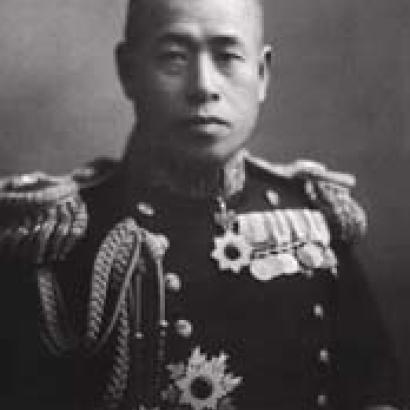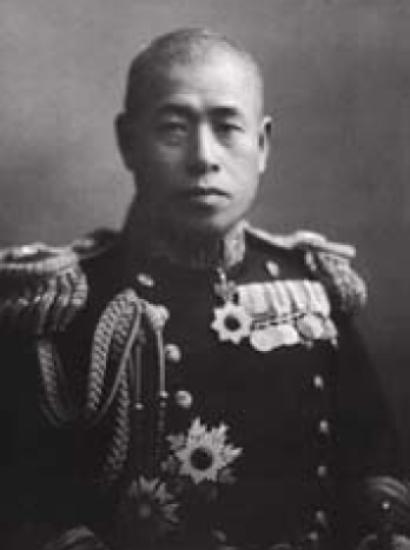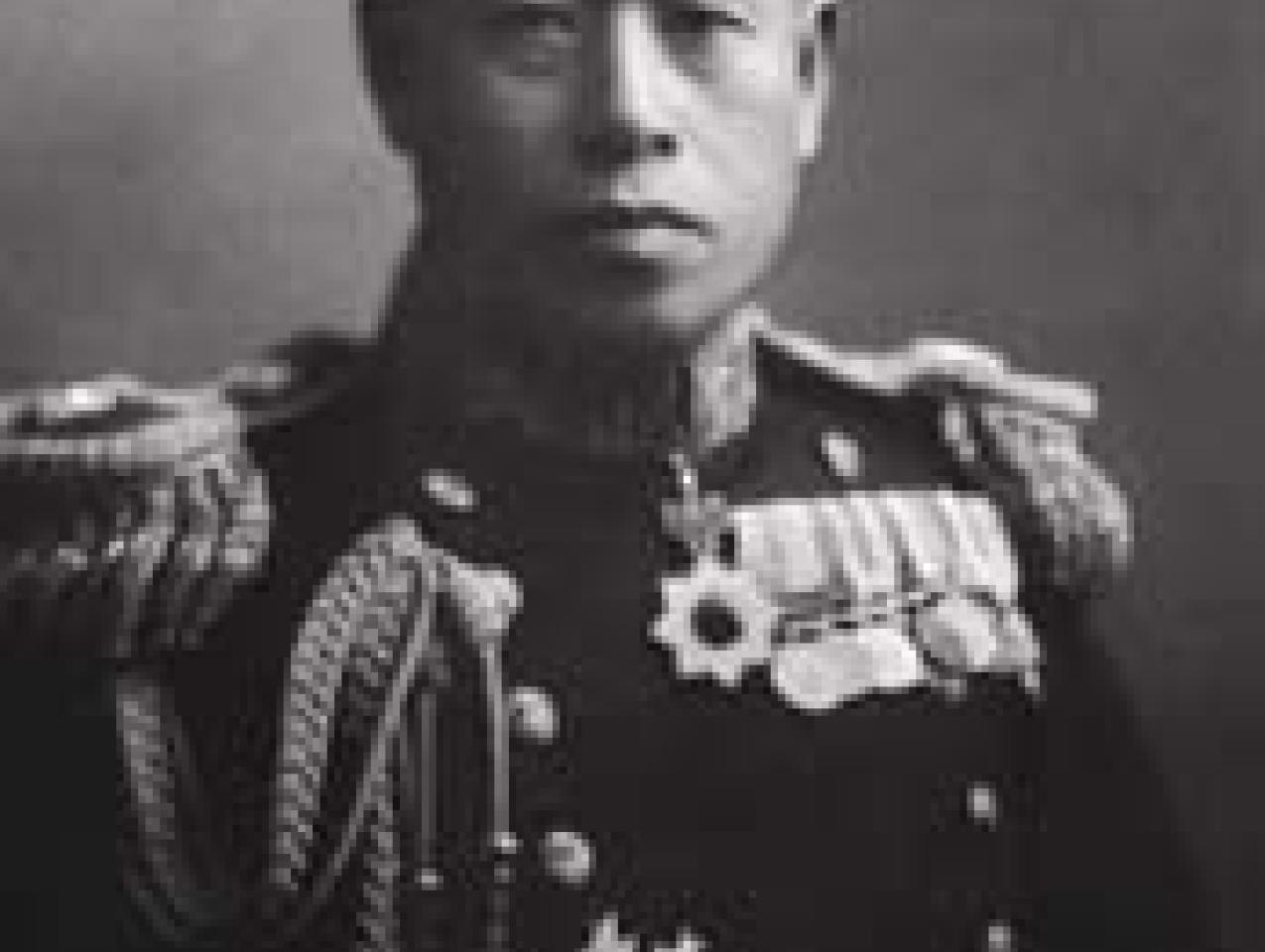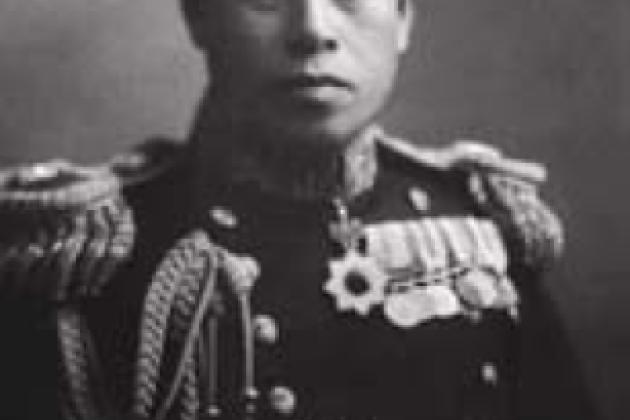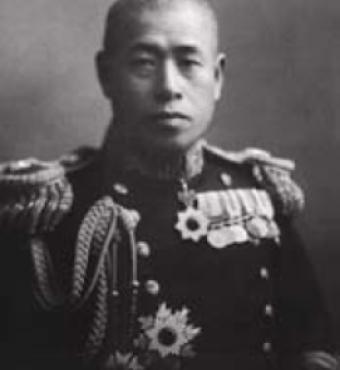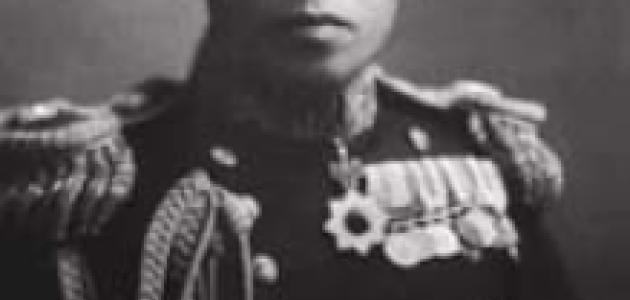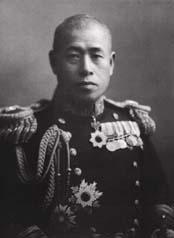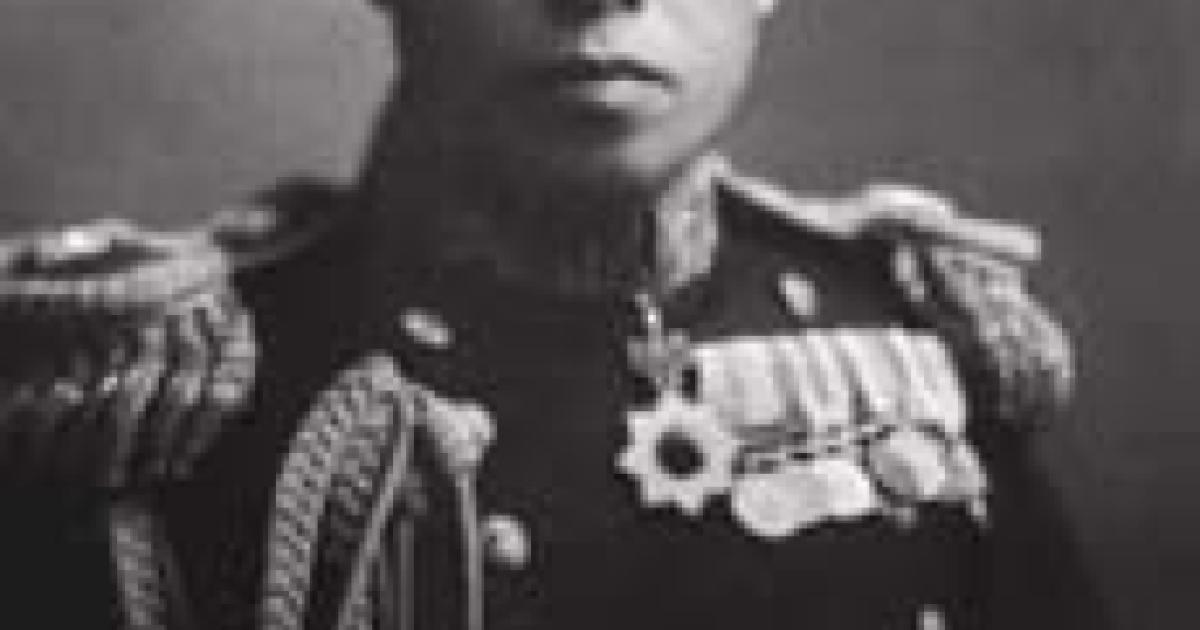Kaigun. The word means "navy" in Japanese. But to older Japanese, the English translation hardly
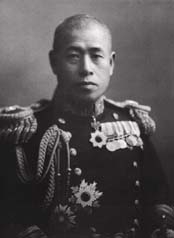
encapsulates the enormous difference between the Nihon Teikoku Kaigun--the Imperial Japanese Navy--which opened the Pacific War in December 1941, and the small Japanese Maritime Self-Defense Force (JMSDF), which today plays a modest role in cooperating with the U.S. Navy to preserve the security of Japan's home waters.
The old navy constituted a mighty fighting force. At the opening of the Pacific War, it comprised 10 battleships; 10 aircraft carriers; 38 cruisers, heavy and light; 112 destroyers; 65 submarines; and numerous auxiliary warships of lesser size. At the time, Japanese naval aviation was world class: Its fighter aircraft and medium bombers were among the world's finest, and among the major navies, its air crews were unquestionably the best trained and most experienced. To have observed the Japanese battle line in column on maneuvers in the northern Pacific during the interwar years, to have viewed the vast bulk of the superbattleship Yamato anchored in Truk lagoon, or to have watched the clouds of fighters and attack aircraft lift off the decks of six carriers in the early morning of December 7 must have been among the great spectacles in modern naval history. Never again will Japanese naval power be so visually impressive.
The Imperial Japanese Navy was emblematic of the rise of Japan as a world power. Yet the overriding aspect of the Japanese navy is its ultimate defeat. Indeed, it was not just beaten by the U.S. Navy; it was annihilated. To Americans of an older generation, particularly those who fought against Japan's navy, that defeat has been a cause of considerable satisfaction and pride. To older Japanese, particularly those who served in their navy, it is a source of humiliation and regret. For those scholars on both sides of the Pacific who study the Japanese navy, its ultimate defeat is the ineluctable fact in assessing its capabilities, its combat performance, even its victories. The Imperial Japanese Navy set in train the events that would lead to its annihilation, rousing the United States against it with a brilliant tactical success and a strategically disastrous provocation, the attack on Pearl Harbor. It is an irony that the attack was planned by a man who opposed war with the United States, Admiral Yamamoto Isoroku.*
Earliest Conceptual Origins
The conceptual origins of the preemptive aerial strike against the U.S. Pacific Fleet at Pearl Harbor--when and how it was conceived, how it evolved, and along what lines--are not entirely clear to this day. Admiral Yamamoto, commander of the Combined Fleet, is usually identified as the creator of the concept. Hard evidence suggests, however, that before Yamamoto proposed it early in 1941, the idea had been propounded in varying degrees of detail and similarity to the actual attack.
| To have watched the clouds of fighters and attack aircraft lift off the decks of six carriers in the early morning of December 7 must have been among the great spectacles in modern naval history. |
At least some of those conceptual precedents may have stimulated Admiral Yamamoto's thinking on the subject. At furthest remove are the civilian writings of the 1920s and 1930s--Japanese, American, and British--on the possible course of a Japan-U.S. war in the Pacific. Some of this speculation was informed, some of it merely sensational. But references to a Japanese attack on Hawaii were so generalized and so diverse in assumed conditions and outcomes that their existence demonstrates only that such vague ideas were floating about in public during these decades.
A Japanese officer like Yamamoto was probably more influenced by studies undertaken by fellow professionals in his own navy than by any other source. And, indeed, several other Japanese naval officers had tested, written about, or spoken about the concept by the time it was taken up by Yamamoto. It is logical to assume that, over time, Yamamoto became conversant with their assessments. But if Yamamoto did not originate the concept, it took someone in the Japanese naval high command of his position, stature, and heretical outlook to make the argument at the highest levels and then push it through to activation.
Yamamoto Decides
It was the results of the fleet's naval air training in 1939–1940, however, that provided the immediate stimulus for the formation of Yamamoto's Pearl Harbor plan. Because of Yamamoto's efforts, the fleet had begun to emphasize air power in its annual training and maneuvers, which brought together the various air units of the fleet. Of special interest was a simulated raid by carrier-based torpedo planes against warships in the harbor at anchor. Although there was much disagreement on the results of that particular exercise, Yamamoto was evidently persuaded that such an attack, if coupled with surprise, would be a success. By the end of the maneuvers in the spring of 1940, Yamamoto had realized that the range and firepower of Japanese naval aviation could make possible a telling first blow against the American enemy, even in his home waters.
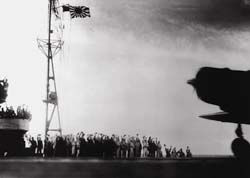
About this time, too, his ideas may have been furthered by a memorandum from his senior staff officer, Captain Kuroshima Kameto, on the possible opening moves of a Japan-U.S. war. Although making no reference to Hawaii, Kuroshima proposed a long-range surprise attack by carriers against the enemy's battle force.
In reflecting on the evolution of the preemptive strike concept, it is important to understand its rationale in Yamamoto's thinking. Abundant evidence suggests that Yamamoto was fundamentally opposed to a war with the United States and Britain. Yet, as commander of the Combined Fleet, he had a keen sense of responsibility that he must have at hand the most effective means for victory if war came. In Yamamoto's view, the navy's strategic orthodoxy--the wait-and-react strategy--was a recipe for ultimate defeat. Unable to bring the U.S. Navy to battle on Japanese terms, the Combined Fleet would simply be worn down in a long war in which the United States would eventually bring its vastly superior industrial might--and thus overwhelmingly superior naval strength--to bear.
But what concrete alternatives were there? Air power suggested a solution, but the Japanese navy had too little of it. This being the case, how best to use air power most effectively? The advance of the U.S. Pacific Fleet from San Diego to Pearl Harbor in May 1940 probably furthered the preemptive strike idea in Yamamoto's thinking. As late as the end of October of that year, however, he still apparently considered the idea too dangerous. Perhaps the remarkable success of the British torpedo bombing attack on Italian ships at anchor at Taranto convinced him that the potential gain was worth the risk. In any event, sometime in November, judging from his communications to a few trusted colleagues, he concluded that a preemptive aerial attack on the Pacific Fleet at its Pearl Harbor base offered the Japanese navy its best chance in a war against great odds.
On January 7, 1941, Yamamoto committed his ideas to paper in his blandly titled memorandum Gumbi ni kansuru shiken (Views on military preparations) to the navy minister, Oikawa Koshiro. Its first major point was that the navy needed to greatly expand its air forces. Second, he noted that although fleet training had been based on the wait-and-react strategy leading up to the classic gun battle in past war games and maneuvers, the navy had never succeeded in winning such an encounter. Usually, the exercises were called off before umpires deemed the navy's strength exhausted. Moreover, Yamamoto argued, the power of aircraft and submarines made it unlikely that a decisive gun battle would ever take place. Hence, the navy needed to give its commanders better training in small-unit tactics for the numerous smaller engagements that would most likely occur.
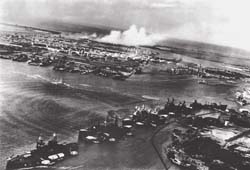
Most of all, in Yamamoto's view, it was essential to change the navy's basic strategy. As a quantitatively inferior naval power, Japan's best hope lay in a qualitatively superior strategy: a violent and crippling first blow at America's main battle force in the first few hours of the war. Time, distance, and geography dictated that this could best be accomplished by an air attack by several carrier divisions on the U.S. Pacific Fleet at Pearl Harbor.
Yamamoto did not downplay the enormous risks involved in the operation. Although he had complete confidence in the technical and combat skills of the navy's carrier forces, the enormous distance involved--far greater than any operation in the navy's history--and the great risks of discovery made executing the operation a dangerous proposition. The plans for the surprise attack on Russian naval forces at Port Arthur in 1904 had been far less complicated, far less taxing, and far less hazardous, and yet the objectives had been met only incompletely. It was why, originally, Yamamoto wished to lead the Pearl Harbor strike force himself.
The General Staff Resists
Since the beginning of 1941, the general staff had been proceeding with its planning for a war with the United States on the basis of that year's annual operational plan. This in turn was predicated on the wait-and-react strategy, governed largely by the priorities of the "southern operations" to secure Southeast Asia and its resources for Japan. In heated arguments during the summer of 1941 between the general staff and Yamamoto's Combined Fleet staff over the wisdom and propriety of the Hawaii operation, the chief of the staff's Operations Section, Captain Tomioka Sadatoshi, provided an extensive list of objections to the Hawaii plan. In sum, he argued that the Japanese navy could not afford to wager its carefully built-up naval air strength in such a desperately risky venture, particularly in view of the fact that it would be needed in other major operations. More than anything else, Tomioka feared that diverting surface and air strength to the Hawaii attack would critically undermine the southern operations and, hence, the major objectives of the coming war. Even if the navy were willing to undertake such an enormous gamble, in Tomioka's view, the Pearl Harbor strike was not truly necessary. Of course, there was the danger that the U.S. Pacific Fleet might try to hit the southern operations in the flank, but Tomioka argued that the enemy would far more likely launch an attack on the Marshall Islands. That would be all to the good since the navy had great confidence that it could intercept the enemy there and launch a smashing counterattack.
| As a quantitatively inferior naval power, Japan's best hope lay in a qualitatively superior strategy: a violent and crippling first blow. |
The bitter controversy between the general staff and the Combined Fleet staff was not resolved during the summer of 1941, even as training and preparations for the Pearl Harbor operation continued. Nor was it resolved during the September map exercises at the staff college or in October aboard the Nagato; those discussions and exercises relating to the Hawaii operation were held separately and were accessible only to those few naval officers who would be involved in carrying it out. Of all the points of contention, the sharpest concerned the number of aircraft carriers to be used in the attack. Yamamoto had originally proposed four; the September map exercises simulated an attack with three, which the umpires judged to have achieved only marginal results. But those on the general staff working out the details for the invasion of Southeast Asia insisted on reserving some carriers for the southern operations since the navy's land-based air power, specifically its fighters, did not have the range to reach the necessary targets and return.
The Plan Falls into Place
Then, in early October, the navy general staff was brought around to Yamamoto's idea. There were several reasons for this volte-face, some operational, some bureaucratic. To begin with, the compromise between the army and navy on nearly simultaneous attacks on the Philippines and Malaya eased navy planning considerably. The availability of the splendid new carriers Shokaku and Zuikaku in late September permitted two other carriers to be released for the southern operations and thus eliminated one of the general staff's key objections to the Yamamoto plan. Finally, Yamamoto had carefully and quietly passed the word to the high command that rejection of the Pearl Harbor plan would result in his resignation. Keenly aware of Yamamoto's popularity and prestige within both the navy and the government and faced with the prospect of disharmony, the general staff gave in.
Later in the month, however, a new storm of controversy broke when Yamamoto insisted that the Hawaii operation employ all Japan's fleet carriers then in commission. He based his views on the map exercises aboard the Nagato, which used six carriers; the results with six carriers were judged far more impressive than with only four carriers. Opposition from the general staff might have derailed the Pearl Harbor strike once and for all, had it not been for the success of tests in the Eleventh Air Fleet, which demonstrated that engine adjustments to the Zero fighters based on Taiwan made them operational for flights to and from the Philippines. Now that the task forces involved in the southern operations would be supplied with adequate air cover, the last barrier to the Yamamoto plan came down.
On November 5 the Combined Fleet's Operations Order No. 1 secretly briefed senior officers on the impending war plans, including the cryptic statement, "To the east, the American fleet will be destroyed." Vice Admiral Nagumo, commander of the First Air Fleet and overall commander of the Pearl Harbor strike force, received his final instructions six days later. On November 22 the strike force began to assemble in its cold and lonely rendezvous, Hitokappu Bay in the Kurile Islands: six carriers, two battleships, two heavy cruisers, one light cruiser, nine destroyers, three submarines, and eight tankers and supply ships. Four days later, in heavy fog, the advance elements of the strike force, including the carriers, departed Hitokappu and sailed into history.








